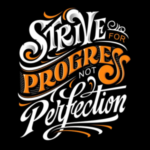Career as a Personal Trainer
Questions and Answers about Personal Trainers for the 8th Grade Career Fair

Please describe what it is like to be a personal trainer
As a personal trainer, my typical day is all about helping people get stronger and healthier. I usually start by checking my schedule to see who I’m training that day. Then, I plan fun workouts for my clients based on their goals and abilities. When it’s time for a training session, I show my clients how to do the exercises and make sure they’re doing them correctly. I also cheer them on and give them tips to help them get better. After each session, I write down their progress and plan for the next workout. Sometimes, I also give advice about healthy eating and staying active outside the gym. My job is really fun because I get to help people feel good and reach their goals!

How many hours do you work each day? Are your hours flexible? Shift work?
As a personal trainer, my work hours can vary each day. I usually work around 8 hours a day, but it depends on how many clients I have and when they want to train. My hours can be flexible because I can set my own schedule to meet my clients’ needs. This might mean working early in the morning, during the day, or in the evening. Sometimes, I even work on weekends if that’s when my clients are free. So, while I don’t work in shifts like some other jobs, I do have the flexibility to plan my days around my clients and my personal life.

What is the salary range for this type of work? What other benefits come with this job?
The salary for a personal trainer can vary a lot, but typically it ranges from about $25,000 to $75,000 per year. How much you make depends on where you work, how much experience you have, and how many clients you train. Some trainers also earn extra money by teaching group fitness classes or selling workout programs online.
There are other benefits to being a personal trainer too. One of the best parts is that you can stay active and healthy while you work. Plus, you get to help others improve their lives, which feels really good. Some trainers also enjoy flexible hours and the freedom to be their own boss if they work independently. Additionally, if you work at a gym or fitness center, you might get a free or discounted membership as a perk!

What kind of training or education does a person need for this job? What are the skills needed for this job?
To become a personal trainer, you usually need to complete a training program and get certified. Many programs require a high school diploma or GED, but you don’t need a college degree. The program will teach you about exercise, nutrition, and how to safely help people reach their goals. After finishing the program, you’ll need to pass an exam to get certified. There are different certifications, like the ones from ACE, NASM, or ACSM, and some gyms might prefer one over the other.
For this job, you need good communication skills to explain exercises and motivate your clients. You also need to be patient and a good listener to understand your clients’ needs and help them achieve their goals. Being organized is important, too, because you have to keep track of schedules and clients’ progress. Lastly, it helps to have a passion for fitness and a positive attitude to inspire others to live healthier lives.

What personal qualities (emotional, physical, and mental) does a person need in order to do well and be happy in your job?
To do well and be happy as a personal trainer, here are some personal qualities that can be helpful:
- Passion for fitness: If you love being active and enjoy learning about exercise and nutrition, you’ll find more joy in your job.
- Empathy: Understanding your clients’ feelings and struggles can help you support them better and build strong relationships.
- Patience: Not everyone progresses at the same pace, so being patient and understanding with your clients can make a big difference in their success.
- Good communication: Being able to explain things clearly and listen well helps you guide your clients and keep them motivated.
- Adaptability: Each client is unique, so you need to be flexible and creative in designing workouts that suit their needs and goals.
- Positive attitude: Staying upbeat and encouraging can help your clients feel more confident and motivated to keep going.
- Physical stamina: Since you’ll be demonstrating exercises and sometimes working out with your clients, it’s important to stay in good shape yourself.
- Problem-solving: You might encounter challenges or setbacks with clients, so being able to find solutions and help them overcome obstacles is key.

What things did you learn in school that help you most in this work? What hobbies or outside activities outside of school have important lessons for this work?
In school, I learned some things that help me in my job as a personal trainer. For example, studying subjects like biology and physical education helped me understand how our bodies work and how exercise affects us. Math and English classes helped me with problem-solving and communication skills, which are important when explaining exercises and keeping track of clients’ progress.
Outside of school, participating in sports or fitness activities can teach you valuable lessons for this job. By being part of a team or trying different types of exercises, you learn about teamwork, discipline, and setting goals. These experiences can help you understand what it’s like to work on improving your fitness, so you can better support your clients.
Other hobbies that can be helpful include learning about nutrition and healthy cooking, which can help you give clients advice on their diets. Additionally, participating in activities like dance, yoga, or martial arts can help you develop a well-rounded understanding of different ways to stay active and healthy.

What can I do now to help prepare me for this career?
If you’re interested in becoming a personal trainer, there are some things you can do now to prepare:
- Stay active: Participate in sports or fitness activities to learn about different types of exercises and find what you enjoy most.
- Learn about nutrition: Start learning about healthy eating habits and try to incorporate them into your daily life. This will help you understand the importance of a balanced diet when advising clients in the future.
- Volunteer or get a part-time job: Look for opportunities to work or volunteer at a local gym, community center, or sports camp. This will help you gain experience and learn more about the fitness industry.
- Practice communication skills: Develop your listening and speaking skills by joining clubs, participating in group activities, or even tutoring younger kids. Good communication is important for a personal trainer.
- Study hard in school: Pay attention to subjects like biology, physical education, and English, as these can help you understand the human body, fitness, and communication.
- Research training programs and certifications: Start looking into different personal training programs and certifications to get an idea of what you’ll need to do after high school.
- Talk to personal trainers: If you know any personal trainers or can meet some at a local gym, ask them about their experiences and what they like most about their jobs. This can help you get a better understanding of the career and if it’s right for you.

Bonus Question #1 – How long does it take to become a personal trainer?
Becoming a personal trainer typically takes a few months to a year, depending on the certification program you choose and how much time you can dedicate to studying. Most personal training certification programs require a high school diploma or GED, so you can start the process after finishing high school.
Certification programs usually include coursework covering topics like exercise science, anatomy, nutrition, and program design. Some programs offer online or in-person classes, while others may provide self-paced study materials. The time it takes to complete the program varies depending on the format and your personal study habits.
After finishing the coursework, you’ll need to pass a certification exam. Some exams are offered throughout the year, while others have specific testing dates. Once you pass the exam, you’ll be a certified personal trainer and can start working with clients.
Keep in mind that some gyms and fitness centers may have additional requirements, like first aid or CPR certifications, so it’s a good idea to research the specific requirements in your area.

Bonus Question #2 Are there different types of personal trainers, like ones who specialize in certain sports or populations?
Yes, there are different types of personal trainers who specialize in certain sports, fitness areas, or populations. Some trainers may focus on specific groups or goals, which allows them to use their expertise to help clients more effectively. Here are a few examples of personal trainer specializations:
- Sports-specific trainers: These trainers work with athletes to improve their performance in a specific sport, like basketball, soccer, or swimming. They design workouts to target skills and muscle groups that are important for that sport.
- Youth fitness trainers: These trainers specialize in working with kids and teenagers, creating age-appropriate workouts and promoting healthy habits for lifelong fitness.
- Senior fitness trainers: These trainers focus on working with older adults, helping them maintain or improve their strength, balance, and mobility as they age.
- Prenatal and postnatal fitness trainers: These trainers work with pregnant women and new moms to help them stay active and healthy during and after pregnancy.
- Rehabilitation trainers: These trainers help clients recover from injuries or surgeries, working alongside healthcare professionals to create safe and effective exercise programs.
- Weight loss trainers: These trainers focus on helping clients lose weight through exercise and nutrition coaching, setting realistic goals and providing support throughout the process.
- Group fitness instructors: These trainers lead group classes, like aerobics, yoga, or spinning, teaching participants proper form and technique while providing motivation and encouragement.

Bonus Question #3 – What are some common challenges that personal trainers face, and how do they overcome them?
Personal trainers may face several challenges in their careers, but they can overcome them with the right strategies and a positive attitude. Here are some common challenges and how personal trainers can address them:
- Finding clients: Building a client base can be tough, especially when starting out. Trainers can overcome this by networking, offering free consultations or trial sessions, and using social media to promote their services.
- Client retention: Keeping clients engaged and motivated can be challenging. Trainers can address this by setting realistic goals, tracking progress, and providing support and encouragement to help clients stay committed.
- Scheduling: Balancing multiple clients and their schedules can be tricky. Trainers can use organization tools like calendars or apps to manage appointments and make sure they have enough time for each client.
- Adapting to different clients: Every client has unique needs and goals. Trainers need to be flexible and creative in designing workouts that cater to individual preferences and abilities.
- Staying up-to-date: The fitness industry is constantly evolving, so trainers need to stay informed about new trends, research, and techniques. They can attend workshops, read articles, or join professional organizations to continue learning.
- Managing difficult clients: Some clients may be hard to work with or have unrealistic expectations. Trainers can address this by setting clear boundaries, communicating effectively, and being patient and empathetic.
- Maintaining work-life balance: Personal trainers may work long or irregular hours, which can be challenging. They can overcome this by setting boundaries, prioritizing self-care, and making time for hobbies and personal relationships.

Bonus Question #4 – How do personal trainers find clients, and how do they market themselves?
Personal trainers can find clients and market themselves through various strategies. Here are some ways trainers can promote their services and attract new clients:
- Networking: Building relationships with people in the fitness industry, like gym owners, fitness instructors, and other trainers, can lead to referrals and potential clients.
- Social media: Trainers can use platforms like Instagram, Facebook, and YouTube to showcase their expertise, share workout tips, and post client testimonials. This helps create a professional image and allows potential clients to find them.
- Website or blog: Creating a website or blog with information about their services, qualifications, and success stories can help trainers reach a wider audience and showcase their expertise.
- Offering free consultations or trial sessions: By giving potential clients a chance to experience a training session without commitment, trainers can demonstrate their skills and help clients understand the benefits of personal training.
- Partnering with local businesses: Trainers can collaborate with local businesses, like gyms, health clubs, or wellness centers, to offer their services to members or clients. This can help increase visibility and reach new customers.
- Community involvement: Participating in local events, like charity runs, health fairs, or fitness workshops, can help trainers connect with potential clients and establish themselves as experts in the community.
- Word of mouth: Providing excellent service to existing clients can lead to referrals and positive reviews, which can help attract new clients.
- Business cards and flyers: Having professional business cards and flyers to hand out during networking events, community gatherings, or at local businesses can help spread the word about a personal trainer’s services.

Bonus Question #5 – What kind of gym or fitness center do personal trainers typically work in?
Personal trainers can work in various settings, depending on their preferences and the opportunities available in their area. Some common places where personal trainers work include:
- Commercial gyms: These are large, membership-based facilities that offer a wide range of equipment and services. Personal trainers working in commercial gyms may be employed by the gym or work as independent contractors, training clients who are gym members.
- Boutique fitness studios: These are smaller, specialized facilities that focus on specific types of workouts, like CrossFit, yoga, or Pilates. Personal trainers in these studios usually have expertise in the specific workout style offered by the studio.
- Private training studios: These are smaller gyms or workout spaces dedicated to personal training services. Trainers working in private studios may own the space themselves or work with other trainers, offering one-on-one or small group training sessions.
- Corporate fitness centers: Some companies have on-site gyms or fitness centers for their employees. Personal trainers working in corporate fitness centers help employees stay active and healthy as part of their workplace wellness programs.
- Community centers or recreation centers: These public facilities often offer fitness classes and personal training services to members of the community. Personal trainers in these settings may work with a diverse range of clients, from kids to seniors.
- In-home training: Some personal trainers offer in-home training services, traveling to clients’ homes to conduct sessions. This can be appealing to clients who prefer a more private and convenient workout environment.
- Online or virtual training: With advances in technology, some personal trainers offer remote training services through video calls, online platforms, or mobile apps. This allows them to work with clients from anywhere and offer more flexible scheduling options.
The type of gym or fitness center a personal trainer chooses to work in depends on their preferences, expertise, and the opportunities available in their area. Some trainers may even work in multiple settings to reach a wider range of clients.

Bonus Question #6 Are there opportunities for personal trainers to continue learning and growing in their careers, like attending workshops or getting advanced certifications?
Yes, there are many opportunities for personal trainers to continue learning and growing in their careers. It’s important for trainers to stay up-to-date with the latest research, trends, and techniques in the fitness industry to provide the best possible service to their clients. Here are some ways personal trainers can continue their education and advance their careers:
- Advanced certifications: Many certifying organizations offer advanced or specialized certifications in areas like sports conditioning, corrective exercise, nutrition coaching, or working with special populations. These certifications allow trainers to broaden their expertise and offer more specialized services.
- Workshops and seminars: Attending workshops or seminars, either in-person or online, can help personal trainers learn new skills and techniques, stay current with industry trends, and network with other professionals.
- Conferences and expos: Fitness industry conferences and expos are great opportunities to learn about new products and services, attend educational sessions, and network with other professionals.
- Online courses and webinars: Many organizations and experts offer online courses or webinars on various fitness topics, which can help trainers expand their knowledge and learn new skills at their own pace.
- Professional organizations: Joining professional organizations like the National Strength and Conditioning Association (NSCA) or the American Council on Exercise (ACE) can provide access to educational resources, networking opportunities, and industry news.
- Continuing education units (CEUs): Many certifying organizations require personal trainers to complete a certain number of continuing education units (CEUs) to maintain their certification. These can be earned through workshops, seminars, courses, or other educational activities.
- Mentorship: Working with a more experienced personal trainer or mentor can help trainers learn new techniques, get advice on career development, and gain insights from someone who has been successful in the field.

Bonus Question #7 What are some of the biggest success stories you’ve seen with your clients?
Each client’s success story is unique, and it’s incredibly fulfilling to play a role in helping them achieve their goals and live healthier, happier lives. Here are a few general examples:
- Weight loss: I’ve worked with clients who have lost significant amounts of weight through regular exercise and healthy eating habits. Seeing their progress and the positive impact on their confidence and overall health is truly amazing.
- Improved health: I’ve helped clients with health issues like high blood pressure, diabetes, or joint pain improve their conditions through consistent exercise and lifestyle changes. In some cases, they’ve even been able to reduce or eliminate medications with their doctor’s approval.
- Recovering from injury: I’ve worked with clients who have recovered from injuries or surgeries by following a safe and effective exercise program. It’s rewarding to see them regain their strength, mobility, and confidence in their abilities.
- Athletic achievements: I’ve trained clients who have achieved personal bests or reached new levels in their sport, like completing a marathon, setting a personal record in a weightlifting competition, or making the varsity team.
- Improved mental well-being: Exercise can have a significant impact on mental health, and I’ve seen clients experience reduced stress, increased self-esteem, and improved mood as a result of their commitment to fitness.
- Lifestyle transformations: I’ve worked with clients who have made long-lasting changes to their daily habits, incorporating regular exercise and healthy eating into their lives. These changes not only lead to physical improvements but also enhance their overall quality of life.





 Previous Post
Previous Post Next Post
Next Post